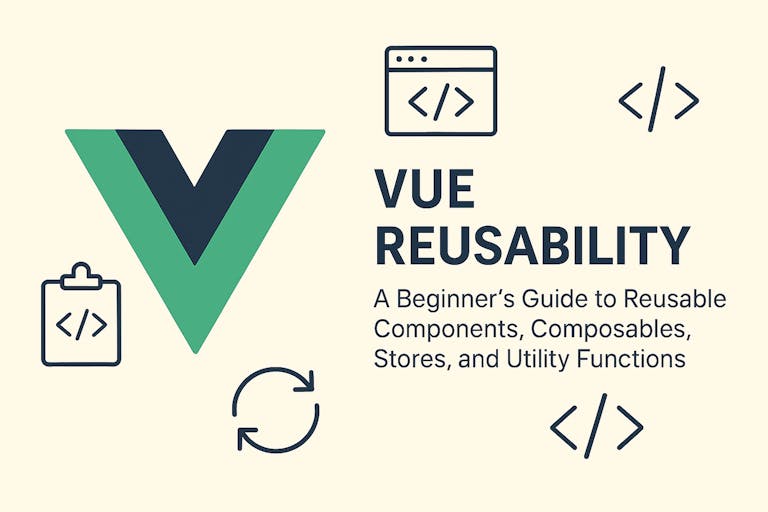
Exploring various voting systems with Konsens

Tanner
April 20, 2021
When we at Peerigon launched what was essentially the alpha version of our internal voting app a few months ago, we were definitely in the midst of the ranked choice honeymoon phase. In Judith's coinciding blog post she laid out the advantages of conducting polls and elections that way, and she is still right! In short, ranked choice is a voting system where participants rank their preferences so that if their favorite doesn't win their next choice takes its place, and it provides them with a greater feeling of fairness, importance, engagement, and often – most importantly – satisfaction with the results.
But as we started to use the tool a few times for internal decisions, there were a few scenarios that popped up which weren't best suited to ranked choice alone.
I wanted to present some of those edge cases to you and share a bit of what I have learned about voting systems, as well as to give an update on how we incorporated that into the next stage of our still-very-much-in-beta voting app, now named Konsens.
Challenge Number 1: Too much ranking
Ranking a handful of options that you find appealing is all fine and dandy, but what happens when you absolutely despise one of them? Or if for some reason the poll has twenty options and you don't have all day for democracy? Both of these are situations I ran into when creating or responding to polls myself, and adding an omit feature to Konsens made the process of voting a lot more comfortable. All it takes is a click of the button.

This does open up a can of worms when it comes to strategic voting. By omitting options you are robbing them of any potential runoff points in your ranking. But this can technically happen anyways if you try to game your response by intentionally placing what you expect to be popular choices towards the bottom of your list. At some point it is almost impossible to take that element out of polling, so you just have to provide as many options as possible and trust in the majority of participants to act in good faith. That's what we are trying to help facilitate with Konsens.
And if you want to make it clear that you object to the very concept of, say, picking between the main Gilmore Girls boyfriends when you know none of them are good enough for Rory, then you can abstain from the poll entirely. As always with Konsens it isn't reported who abstained, but it is counted separately and maybe helps get your 2000's teen drama agenda across.
Challenge Number 2: Sometimes we want more than one winner
If Judith's inspiration for ranked choice was a Youtube video, then my inspiration for adding positional voting would be even nerdier: message board "Game of the Year" awards. Every year on this message board the community gathers to submit their rankings for their favorite games of the year. As instructed by the site Admin, you are supposed to type your list in a specific format
BALLOT SCORING Here is how points are distributed according to your ordered preference. Only the first ten titles on your list will receive points, as indicated below.
- Game A - 4 points
- Game B - 3 points
- Game C - 3 points
- Game D - 2 points
- Game E - 2 points
- Game F - 2 points
- Game G - 1 points
- Game H - 1 points
- Game I - 1 points
- Game J - 1 points
- Game K - 0 points
- Game L - 0 points
The result is a list of no doubt hundreds of video games with a wide range of collected points depending on how often and how highly they were ranked (sadly Final Fantasy VII: Remake's 826 points couldn't top The Last of Us Part II's 1062).
This type of vote system is often called positional voting. A more popular example is everyone's favorite yearly event: The Eurovision Song Contest. Unlike the example above, Eurovision's point allocation is not strictly linear and starts with 12 points for first place, 10 for second, and then 8-1 points for the next eight ranked countries. Konsens uses the Borda Count, meaning each answer receives n - x points, where n is the number of options and x is its ranking in the list (ex: in a 5 answer poll, first place is 4 points and second is 3 and so on).
What is the advantage of calculating results this way? In my eyes it is better suited for instances where you care about all of the results and not just the most popular answer. The results to the Game of the Year voting is presented with a bit of flair and feelings about what made spot 10 can be just as salty as the big winner. Eurovision revels in the jostling for position that happens each time a country reveals their next point recipients.
Positional voting was originally added to Konsens because we were trying to decide which charities to donate to; Peerigon sets aside a bit of money each year to donate and we typically spread the money amongst a few organizations, so eliminating and redistributing points to get one winner with ranked choice didn't make the most sense.
Even if you only want one winner there can be a difference in outcomes between positional and ranked choice, but we will cover that in the example poll comparison later.
Challenge Number 3: Sometimes it makes no sense to rank options
It is easy to come away from reading about how ranking your choices in a poll can produce fair results for both single winners and for a range of options and feel like your bases are covered – initially we felt the same way! But after a while you start to realize that there are instances where it doesn't really make sense to rank poll options at all.
The most obvious example is any poll that is a simple yes/no/maybe question. If I asked you "do you like Pizza", does it make sense after answering "yes" to try to rank "maybe" and "no" below it? Or for those options to receive any weight in the calculation of the winner? This actually exposes a larger pattern where ranking makes no sense: diametric opposites or options that cancel each other out.
Situations like that are confusing and if nothing else it leads to useless busy work for the users. So that's how Konsens received it's third and final (for now) voting system called simple plurality voting. A fancy name for raising your hand in a group and seeing who got the highest number. Simple indeed.
A case study comparison
I wanted to leave you with a quick comparison between the now three systems available to Konsens. I set up a fake poll where an agency asks their employees which candy they should buy for the office.

Sorry for the Persona 5 names, I was 120 hours deep when I made this sample data.
It is worth noting that it took a couple of attempts to reach a set of poll responses where each voting system produces a different outcome. That should actually provide you comfort in choosing between them – when it comes to ranked choice vs. positional voting anyways. Both will provide you with a consensus pick from your group, only differing in super close calls. Anyways, here are the results.
Simple plurality

As simple as the name suggests. The first choice of each responder receives a single vote. Looking at the data table above would reveal that's a tie between Reeses and Pocky.
Moving on, maybe it's best to look at the two ordered systems at once.
Positional voting vs ranked choice



If you compare the remaining three contenders in the second-to-last round of ranked choice and the top three of the positional vote, which of them stick out? Pocky in the former, Snickers in the latter. How come?
Pocky performs so well in ranked choice but not positional voting because it is loved by a few and hated by the rest. Controversial options like this have a better chance at making a dent in ranked choice, especially in a crowded field (while not a ranked choice election, you can see this effect in a certain 2016 U.S Republican primary). But they don't do well in a spread allocation like with positional voting.
Positional voting on the other hand tends to reward options that are universally in the upper-middle tier of the results. That's what happened with me stacking the deck with Snickers being almost everyone's third choice in the sample data.
In all three systems Reeses and Peanut M&Ms performed well – as they should as the superior candies.
So how to choose between the two? It is probably best to experiment with both over time and see how your group feels about the result. Outside of the additional insight into the data provided by positional voting, I have a theory that it is the right choice if you feel like you have a large set of options that contain a couple of curveballs. Then it can act as a safeguard against an outlier sneaking past similar options that are splitting the vote. Otherwise I would go with ranked choice because it is still the standard-bearer for fair voting. Either way you can be happy knowing that you are making an effort to reach an outcome better for everyone involved.
Conclusion
As I reflect on all of this experimenting we have done with Konsens, what stands out to me is how much of my life I have only known one method. As an American, it has pretty much always been majority wins for polls or voting, and I rarely questioned its fairness. At Peerigon we did question it. But unlike most governments, we are always willing to change our methods if we find a better solution, so if you have an opinion, let us know! And if you think you can find a use for Konsens yourself, you are welcome to give it a shot. Meanwhile I have some Gilmore Girls polls to create.
voting systems
ranked choice
positional vote
simple plurality
konsens
Read also

Michael, 04/16/2025
Green Hosting: A Sustainability Comparison
Sustainability
Green Software
Consulting
Hostingsec

Lea, 04/04/2025
A Beginner's Guide to Reusability in Vue
Vue
JavaScript
Reusability
DRY Principle
Components

Francesca, Ricarda, 04/02/2025
Top 10 Mistakes to Avoid When Building a Digital Product
MVP development
UX/UI design
product vision
agile process
user engagement
product development